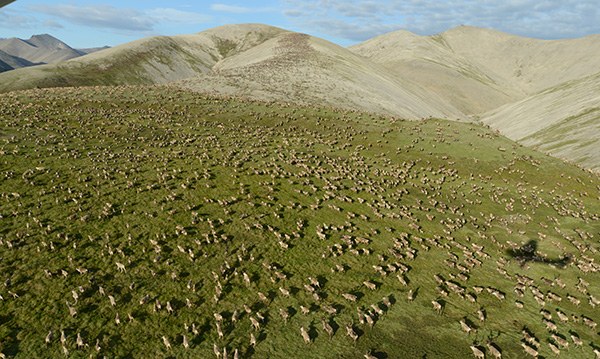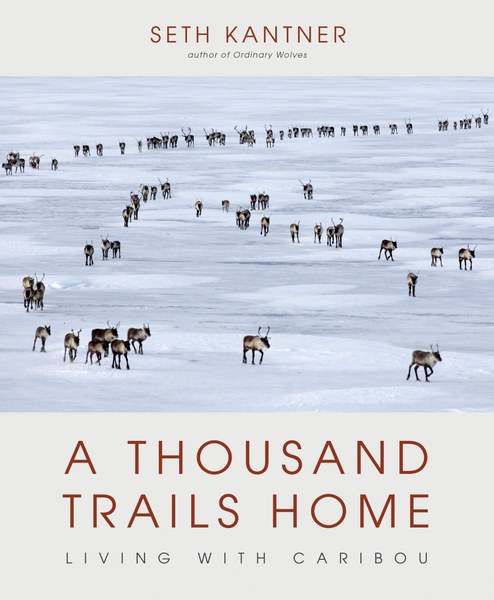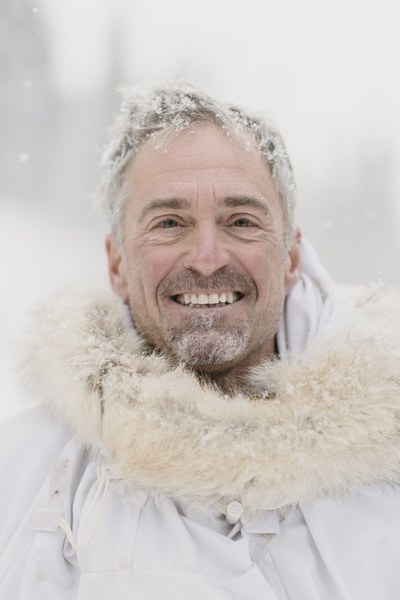
Seth Kantner is a commercial fisherman, writer, and wildlife photographer. His newest book, A Thousand Trails Home: Living with Caribou (Mountaineers Books; September 2021), is a stunning firsthand account of a life spent hunting, studying, and living alongside caribou. He lives in the Northwest Arctic.
The subtitle of your book is “Living with Caribou.” Describe these creatures to those who may not be familiar, and why they’re important.
In Arctic Alaska massive herds of caribou still migrate across the landscape, much like herds of the African Serengeti or the nearly-extirpated buffalo of the American West. The presence of these huge herds and their contribution to the intact ecosystem of the entire northern half of Alaska is more than a distant symbol of what is left of wilderness on earth – they define our remaining relationship with nature itself. In this way, caribou are us.
Briefly describe your childhood and how you came to revere these animals.
I was born in a sod igloo in the Arctic and raised in many of the traditional ways of the local Inupiaq. This meant living off the land, hunting and fishing for food and furs, and for meat to fed our dog team. Caribou were the most important animal in that life, for our survival, for sleeping skins, mukluks, parkas, dried meat, fat, and countless meals and other daily uses.
Tell us about the work you do to conserve the caribou population?
I photograph and write about caribou and other animals in an attempt to understand and explore my own close connection to the land, and in the process to hopefully reveal to those who live more removed from the natural world its equally vital importance to them, too.
Why is the Alaskan Arctic considered ‘ground zero’ for climate change in the US? What are simple things we can do to help stop it?
The Arctic is warming twice as fast as the rest of the United States. Because the ocean surface has been ice covered and the land frozen (permafrost) for eons, this rapid warming/thawing is causing very visible, shocking, and catastrophic changes here in my homeland.
I don’t think there are simple answers in this complex world. Obviously, staying home would be a start! Live as close to your food as you can. Slow down, travel shorter distances, and examine how your desires affect the lives of the creatures around you.
What is the one takeaway you’d like readers to have from your book?
I would like readers to love and respect caribou by the time they turn the last page – to want to see the vast herds, to help protect them, maybe even to eat some meat or wear a hide, and to truly feel they know this wild animal in the countless intertwined ways that make up life lived on the land. I hope to also teach readers about the personal, biological, historical and cultural importance of caribou, and in that way show them how much these animals matter to not just me but all of us.
A Thousand Trails Home is available for purchase at our Seattle Program Center bookstore, online at www.mountaineersbooks.org, and everywhere books are sold.
This article originally appeared in our Fall 2021 issue of Mountaineer Magazine. To view the original article in magazine form and read more stories from our publication, visit our magazine archive.
 The Mountaineers
The Mountaineers

